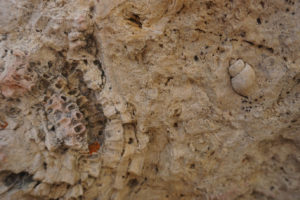 Submerged in the teal kelpy coolness, I revel in the presence of my dear friend once more. This summer, the Pacific Ocean has not only been a friend, but a sage teacher, soulful healer, and sublime inspiration. Days spent surfing the small summer swells have taught me patience and awareness, filled me with peace and contentment, and welcomed me into a multi-species community of birds, fish, mammals, seaweeds, and surfers. My heart aches to leave this newfound community even as I prepare for a wild rocky adventure.
Submerged in the teal kelpy coolness, I revel in the presence of my dear friend once more. This summer, the Pacific Ocean has not only been a friend, but a sage teacher, soulful healer, and sublime inspiration. Days spent surfing the small summer swells have taught me patience and awareness, filled me with peace and contentment, and welcomed me into a multi-species community of birds, fish, mammals, seaweeds, and surfers. My heart aches to leave this newfound community even as I prepare for a wild rocky adventure.
I arrive in Missoula with salt still clinging to my skin, ready to become an apprentice to the oceans of grass and those slow-moving tectonic tsunamis we call mountains. I have my doubts that anything could replace the constant pulse of the tide as the rhythm of my heart, the ocean’s ever-changing moods as the mirror of my emotions. Nevertheless, I feel called to leap into the unknown, to explore a state I have visited only once before and learn the lessons that the famously big sky and those creatures that roam the Earth below have to offer.
From Greathouse Peak I greet the big blue sky, yet the state’s simple nickname obscures a more diverse and striking feature. Standing atop the tallest ridge in the Big Snowy Mountains, 8,651 feet above my coastal home, the earth itself commands my awe-stricken gaze. The plains prove their worthiness of their “ocean of grass” title, fading fluidly from golden to pale blue as they peel over the horizon. The flat land of central Montana is disturbed only by the abrupt protrusion of island mountain ranges. The Snowies themselves are an island in the rippling waves of grasslands, a thought that brings me peace at this rocky summit.
Exploring the ridges of the steep slopes below, I come across three massive angular boulders long detached from the cliff above. Settling into a shady spot on the upward slope, my eyes are drawn to the strange texture of the rock. I take a closer look and begin to notice familiar shapes and patterns: conical spirals, almost-circular indents with rounded ridges, and clusters of pinpricks. An ancient coral reef begins to take shape.
I identify the spiraling shells of sea snails and brachiopods, a clam-like organism that thrived 100 million years ago in the Cretaceous Seaway. I stare in disbelief at ocean turned to rock, the ancestors of my marine friends preserved on a mountain top in a now landlocked state. Wonder overwhelms me as I imagine this place transforming from a shallow sea to the landscape it is today. I ponder what my beloved surf break might look like 100 million years from now. Will my community of ocean-dwelling organisms be petrified? Will their fossils find a mountaintop or be buried deep in the seafloor?
My own temporal smallness washes over me. Earth’s shape seems constant and everlasting but is in fact as dynamic as the ocean itself: always in a state of change, perpetually rearranged by the mighty force of nature and time. I thought surfing had taught me patience, but minutes waiting for waves on the Pacific are inconsequential to the forbearing principles of rock. I pause and take a deep breath, slowing my heart and mind. Geologic past and future both near and far leave my consciousness and I am present with my sense of awe, a feeling of home in this place so recently unfamiliar, still with much to learn.
Sofia Fea Ruiz is a student at the University of California – Santa Barbara where she is pursuing a degree in Environmental Studies. Born on the waveless Long Island Sound in Connecticut, she has become a dedicated surfer since her arrival on the Pacific coast.